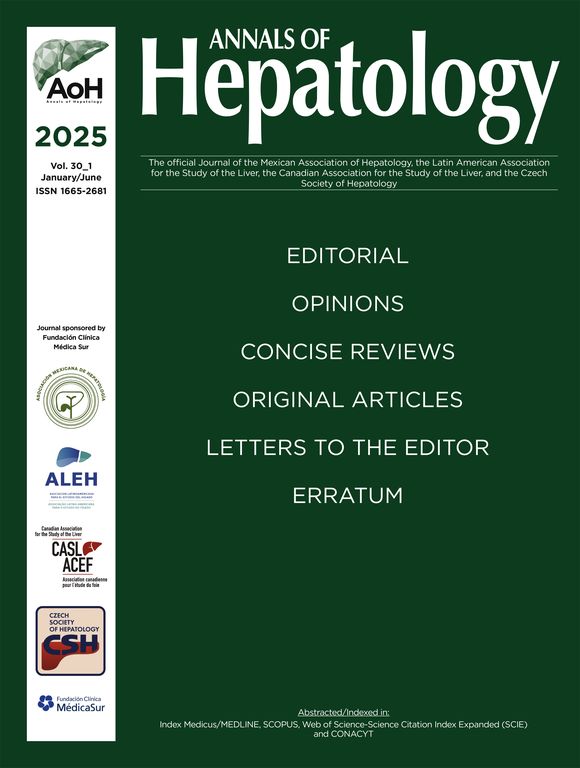Portal vein aneurysm is a focal dilatation of the portal venous system. It can be in a fusiform or saccular configuration. Portal vein aneurysm is a very rare but an important condition.1 We reported here a case with portal vein aneurysm that was asympto-matic and had no signs suggestive of portal hypertension.
A 66-year-old female was admitted to department of gastroenterology for dyspepsia lasting for a long time and no signs suggestive of portal hypertension. For investigation of the gastrointestinal system, initial diagnostic test, abdominal ultrasonography was performed. During ultrasonography, portal vein aneurysm was incidentally detected. In Color-Doppler sonography, it has been screened that, regarding blood flow, lumen of the aneurysm was fulfilled totally. There was also the monophasic turbulent flow pattern which is typical for portal venous blood flow and hepatopedal flow along the aneurysmal wall. Intrahepatic portal vein aneurysm, 24 mm in diameter, was situated at the connection point of the main and the left portal veins. There were no signs to suggestive portal hypertension (splenomegaly, ascites or esophagogastric varices) in our patient. For further anatomical diagnosis, multidedector computerized tomography (Figure 1) and computerized tomography angiography (Figure 2) was performed. There was an aneurysm with a diameter of 24x33 mm at the bifurcation site of the left portal vein. Etiologic factors like portal hypertension, intervention to portal system, malignancies of adjacent organs, trauma, surgery, some infectious conditions like hepatosplenic schistosomiasis and hypercoagulability states were not present.
Intrahepatic portal vein aneurysm is still a rare vascular abnormality although new imaging modalities have been developed.2 Exact mechanism is still unknown. A relation between portal vein aneurysm and portal hypertension has been emphasized. Other acquired etiologies, such as chronic liver disease, trauma, liver biopsy, pancreatitis or tumor invading the portal veins have been reported.3-5 In our case, the hypothesis of a congenital origin can be suggested because no other cause was found. Although any portion of the portal venous system might be affected from the disease, main portal vein and its intrahepatic branches are the most common vessels showing an aneurysm.6
The diagnosis is easily assessed by Color-Doppler ultrasound, which displays the constantly rotating blood flow within the lesion and typical spectral analysis pattern. However, the additional performance of a high resolution angiographic technique, such as multidetector CT, is suitable to rule out other diagnoses.7 Multiphasic CT is particularly useful in excluding arteriovenous fistula and portosystemic shunt, which are characterized by an exclusive enhancement of the lesion at the early portal and portal phases without early enhancement of the systemic veins.
In conclusion, ultrasonography with Doppler evaluation is the initial tool for the diagnosis of portal vein aneurysm. However, further imaging modalities such as computerized tomography angiography might be additionally used.













